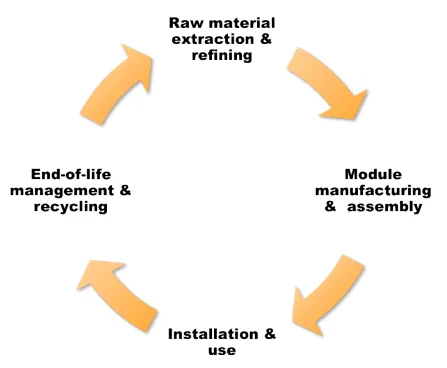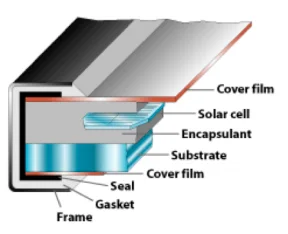Health and Safety Concerns of Photovoltaic Solar Panels
The generation of electricity from photovoltaic (PV) solar panels is safe and effective. Because PV systems do not burn fossil fuels they do not produce the toxic air or greenhouse gas emissions associated with conventional fossil fuel fired generation technologies. According to the U.S. Department of Energy, few power-generating technologies have as little environmental impact as photovoltaic solar panels.
However, as with all energy sources, there are potential environmental, health and safety hazards associated with the full product life cycle of photovoltaics. Recent news accounts have raised public interest and concerns about those potential hazards.
A substantial body of research has investigated the life cycle impacts of photovoltaics including raw material production, manufacture, use and disposal. While some potentially hazardous materials are utilized in the life cycle of photovoltaic systems, none present a risk different or greater than the risks found routinely in modern society.
The most significant environmental, health and safety hazards are associated with the use of hazardous chemicals in the manufacturing phase of the solar cell. Improper disposal of solar panels at the end of their useful life also presents an environmental, health and safety concern. The extraction of raw material inputs, especially the mining of crystalline silica, can also pose an environmental, health and safety The environmental, health and safety concerns for the life-cycle phase are minimal and limited to rare and infrequent events. With effective regulation, enforcement, and vigilance by manufacturers and operators, any danger to workers, the public and the environment can be minimized. Further, the benefits of photovoltaics tend to far outweigh risks especially when compared to conventional fossil fuel technologies. According to researchers at the Brookhaven National Laboratory, regardless of the specific technology, photovoltaics generate significantly fewer harmful air emissions (at least 89%) per kilowatthour (KWh) than conventional fossil fuel fired technologies.
Materials used in photovoltaics solar panels
The basic building block of a photovoltaic solar system is the solar cell. Solar cells are solid state,
semiconductor devices that convert sunlight into electricity. Typically a number of individual cells are connected together to form modules, or solar panels. In order to provide electrical insulation and protect against environmental corrosion, the solar cells are encased in a transparent material referred to as an encapsulant. To provide structural integrity the solar cells are mounted on top of a rigid flat surface or substrate. A transparent cover film, commonly glass, further protects these components from the elements.
Several types of semiconductor materials are used to manufacture solar cells but the most common material is crystalline silicon, typically from quartz or sand,capturing a 60% market share. Crystalline silicon
semiconductors are also utilized in the manufacture of integrated circuits and microchips used in personal
computers, cellular telephones and other modern electronics. The outer glass cover constitutes the largest share of the total mass of a finished crystalline photovoltaic
module (approximately 65%), followed by the aluminum frame (~20%), the ethylene vinyl acetate
encapsulant (~7.5%), the polyvinyl fluoride substrate (~2.5%), and the junction box (1%). The solar cells
themselves only represent about four percent (4%) of the mass of a finished module.
Life Cycle of Monocrystalline Silicon Solar Panels
The simplified process diagram below illustrates the basic life-cycle stages for the manufacturing of
monocrystalline silicon (c-Si) solar panels.
The life cycle of a c-Si panel starts with mining of crystalline silica in the form of quartz or sand. The raw material is then refined in industrial furnaces to remove impurities to produce metallurgical grade silicon (~98% pure silicon). The metallurgical grade silicon is then further refined to produce high purity polysilicon for use in the solar and semiconductor industry. Next, the polysilicon is used to grow monocrystalline rods or ingots. These ingots are then shaped and sawn into very thin wafers. The wafers are then manufactured into solar cells and assembled into photovoltaic modules ready for installation. At the end of their useful life the materials in the panels can recycled and used as feedstock material for new panels.





